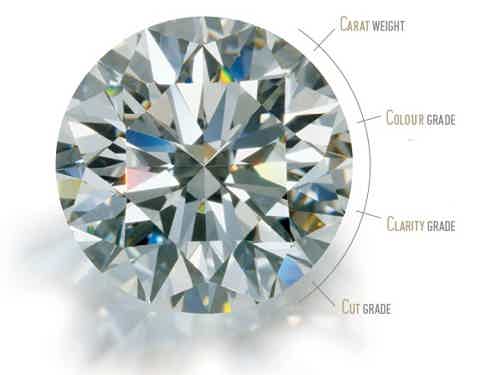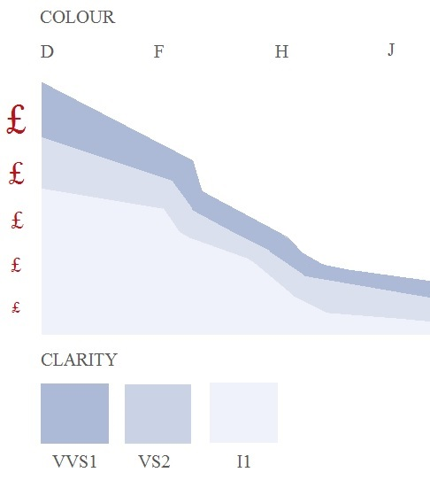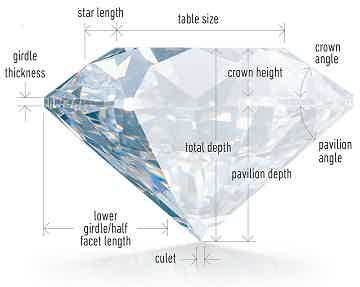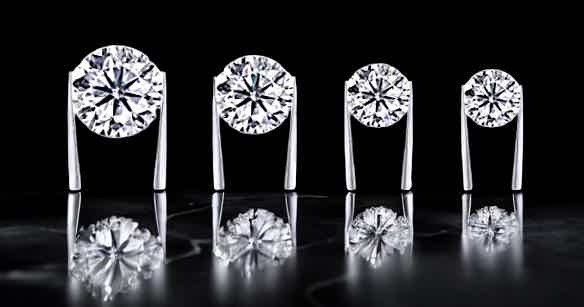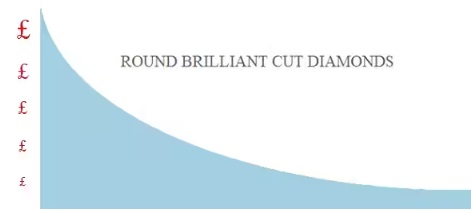Inclusions found within a diamond can be considered nature's birthmarks, the distinguishing characteristics that make the stone unique. When grading a diamond, the amount of inclusions and blemishes has a direct impact on its clarity and value. Flawless diamonds containing no inclusions are extremely rare and very expensive. A majority of the commercially sold diamonds contains inclusions that are undetectable to the unaided eye.
FL (Flawless) is the best clarity of diamond as it does not contain any inclusions or blemishes, under the scrutiny of 10x magnification. IF (Internally Flawless) diamonds may contain external characteristics (also known as blemishes) that are extremely difficult to view at 10x magnification on the stone's surface, if at all.
Pobjoy diamonds and diamond set jewellery range in clarity between IF and Si1.
Of equal significance is whether the diamond is eyeclean. This simply means that it appears to the naked eye as being free from inclusions or blemishes unless looked at under a loupe or magnifying glass.
While not included in a grading report, some diamonds can exhibit brown, green or milky undertones. This is known as BGM. It is important that the diamond you choose is appropriately screened to avoid this.


